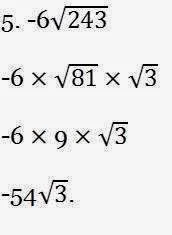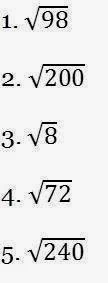Lesson : Corrections In
Chain Surveying
Chain survey is the simplest method of
surveying. It is the exercise of physically measuring horizontal distances. In
this method the lengths of lines marked on the field are measured, while the
details are measured by offsets and ties from these lines. This field work will
continue for 3 field hours. This is most suitable adapted to small plane areas
with very few details.
Tape Corrections: - Precise measurements of distance is
made by means of a steel tape 30 m or 50 m in length. Before use it is
desirable to ascertain its actual length (absolute length) by comparing it with
the standard of known length, which can be done for a small fee by the Survey
and Standards department. It is well to note here the distinction between
the nominal or designated length and absolute length of a tape. By the former
is meant it’s designated length, e.g. 30 m, or 100 m, while by the latter is
meant it’s actual length under specified conditions. The tape may be
standardized when supported horizontally throughout its full length or in
catenary. The expression that “a tape is standard at a certain
temperature and under a certain pull” means that under these conditions the
actual length of the tape is exactly equal to its nominal length. Since
the tape is not used in the field under standard conditions it is necessary to
apply the following corrections to the measured length of a line in order to
obtain its true length:
Correction for absolute length, (ii)
Correction for temperature, (iii) Correction for tension or pull, (iv)
Correction for sag, and (v) Correction for slope or vertical alignment.
A correction is said to be plus or positive when the uncorrected length is to be
increased, and minus or negative when it is to be decreased in order to
obtain true length.
Correction for Absolute Length: - It is the usual practice to express
the absolute length of a tape as its nominal or designated length plus or minus a
correction. The correction for the measured length is given by the
formula,
Ca = Lc / l ------------------- (1)
Where Ca = the correction for absolute length.
L = the measured length of a line.
l = the nominal length of a tape.
C = the correction to a tape.
The sign of the correction (Ca)
will be the same as that of c.
it may be noted that L and l must be expressed in the same units
and the unit of Ca is
the same as that of c.
Correction for Temperature: - It is necessary to apply this
correction, since the length of a tape is increased as its temperature is
raised, and consequently, the measured distance is too small. It is given
by the formula,
Ct = a (Tm – To)L-----------(2)
in which Ct = the correction for
temperature, in m.
a = the coefficient of thermal expansion.
Tm =
the mean temperature during measurement.
To =
the temperature at which the tape is standardized.
L = the measure length in m.
The sign of the correction is plus or
minus according as Tm is
greater or less
than To. The coefficient of expansion for steel varies from 10.6 x 10-6 to 12.2 x 10-6 per degree centigrade and that for invar from 5.4 x 10-7 to 7.2 x 10-7. If the coefficient of expansion of a tape is not known, an average value of 11.4 x 10-6 for steel and
6.3 x 10-7 for invar may be assumed. For very precise work, the coefficient of expansion for the tape in question must be carefully determined.
than To. The coefficient of expansion for steel varies from 10.6 x 10-6 to 12.2 x 10-6 per degree centigrade and that for invar from 5.4 x 10-7 to 7.2 x 10-7. If the coefficient of expansion of a tape is not known, an average value of 11.4 x 10-6 for steel and
6.3 x 10-7 for invar may be assumed. For very precise work, the coefficient of expansion for the tape in question must be carefully determined.
Correction for Pull (or Tension): - The
correction is necessary when the pull used during measurement is different from
that at which the tape is standardized. It is given by the formula,
Cp = (P-Po)L / AE
----------(3)
Where Cp = the
correction for pull in metres.
P = the pull applied during measurement, in newtons (N).
Po= the pull under which the tape is standardized in
newtons (N).
L = the measured length in metres.
A = the cross-sectional area of the tape, in sq.cm.
E = the modulus of elasticity of steel.
The value of E for steel may be taken as
19.3 to 20.7 x 1010 N/m2 and that for invar 13.8 to 15.2 x 1010 N/m2. For every
precise work its value must be ascertained. The sign of the correction is
plus, as the effect of the pull is to increase the length of the tape and
consequently, to decrease the measured length of the line.
Correction for Sag: - (Fig.1). When a tape is
stretched over points of support, it takes the form of a catenary. In
actual practice, however, the catenary curve is assumed to be a parabola.

The correction for sag (or sag correction)
is the difference in length between the arc and the subtending chord (i.e., the
difference between the horizontal distance between supports and the length
measured along the curve). It is required only when the tape is suspended
during measurement. Since the effect of the set on the tapes is to make
the measured length too great this correction is always subtractive. It is given
by the formula,
Cs = l1 (mgl1)2 / 24P2 = l1(Mg)2 / 24P2 ………………(4)
in which Cs = the sag
correction for a single span, in metres.
l1 = the distance between supports in
metres.
m = the mass of the tape, in kilograms per metre.
M = Total mass of the tape in kilograms.
P = the applied pull, in newtons (N).
If there are n equal spans per tape length,
the sag corrections per tape length is given, by
Cs = nl1(mgl1)2 / 24P2 = l(mgl1)2 / 24P2 = l(mgl)2 / 24n2P2
………….(4a)
in which l = the length of the tape = nl1, and l1= l/n.
Normal Tension: - The normal tension is a
tension at which the effects of pull and sag are neutralized, i.e. the
elongation due to increase in tension is balanced by the shortening due to
sag. It may be obtained by equating the corrections for pull and sag.
Thus we have,
(Pn-Po)l1 / AE = l1(mgl1)2 / 24Pn2 or (Pn-Po) Pn2 = W2AE / 24
~ Pn = 0.204 W √AE / √(Pn-Po)
…………………………………………..(5)
in which Pn = the normal tension in newtons (N).
W = the weight of the length of tape between supports
in newtons (N).
The value of Pn may be determined by trial.
Correction for Slope or Vertical Alignment: - (Fig 2) This correction is required
when the points of support are not exactly at the same level.

Let l1 l2, etc.
= the lengths of successive uniform
slopes.
lt1, lt2 etc. = the differences in height
between the extremities of each of these
slopes.
Cs = the total correction for slope.
If l is the length of any one slope, and h the difference in height between the
ends of the slope,
the slope correction = l - √ l2-h2
= l – l (1 – h2 / 2l2 – h4 / 3l4 – etc..)
=(h2 / 2l + h4 / 3l3 + etc.) = h2 / 2l ------------------------(6)
hence,
Cs = (h12 / 2l1 + h22 / 2l2 + ….. + hn2 / 2ln)
-------------------------------(6a)
When the slopes are of uniform length l we have
Cs = l / 2l (h12 + h22 + ……… + hn2) = ∑h2 / 2l -------------------------(6b)
This correction is always subtractive from the measured length. If the
slopes are given in terms of vertical angles (plus or minus angles), the
following formula may be used:
The correction for the slope = l – l cos 0 = 2l sin2 0 / 2
= l versin 0 (-ve)
--------------------------(7)
in which l = the length of the slope : 0 = the
angle of the slope.
Examples on Tape Corrections
Examples 1: - A line was measured with a steel tape which was exactly
30m long at 18oC and found to be 452.343 m. The
temperature during measurement was 32oC. Find the true
length of the line. Take coefficient of expansion of the tape
per oC=0.0000117.
Temperature correction per tape length = Ct
= α
(Tm - To) l
Here l = 30 m: To =18oC; Tm = 32oC;
α = 0.0000117
~ Ct = 0.0000117 (32-18) 30
= 0.004914 m (+ ve)
Hence the length of the tape at 32oC
= 30 + Ct
= 30 + 0.004914 = 30.004914 m.
Now true length of a line = L’ / L x its measured length.
L = 30 m: L’ = 30.004914 m; measured
length = 452.343 m.
~ True length = 30.004914 / 30 x 452.343 =
452.417 m.
Example 2: - A line was measured with a steel rape
which was exactly 30 m at 18oC and a pull of 50 N and the measured
length was 459.242 m. Temperature during measurement was 28oC
and the pull applied was 100 N. The tape was uniformly supported during
the measurement. Find the true length of the line if the cross-sectional
area of the tape was 0.02 cm2, the coefficient of expansion
per oC = 0.0000117 and the modulus of elasticity = 21 x 106 N per cm2.
per oC = 0.0000117 and the modulus of elasticity = 21 x 106 N per cm2.
Temperature
Correction per tape
length
= α ( (Tm – To)L
= 0.0000117 x (28 -18) 30
= 0.00351 m (+ ve)
Sag correction per tape
length
= 0
Pull correction per tape
length
= (Pm - Po)L
/ AE
= (100 – 50)30 / 0.02 x 21 x 106
= 0.00357 m (+ve)
~ Combined correction
= 0.00351 + 0.00357 m.
= 0.00708 m
True length of
tape
= 30.00708 m
True length of the
line
= 30.00708 / 30 x 459.242
= 459.350 m.
Example 3: - A 50 m tape is suspended between the ends
under a pull of 150 N. The mass of the tape is 1.52
kilograms. Find the corrected length of the tape.
Correction for sag
= Cs = l1 (Mg)2 / 24 P2
l1 = 50 m; M = 1.52 kilograms; P =
150 N.
~ Cs = 50 x (1.52 x
9.81)2 / 24 x 1502 = 0.0206 m.
~ Corrected length of the
tape
= l – Cs
= 50 – 0.0206
= 49.9794 m.
Example 4: - The downhill end of the 30 m tape is held
80 cm too low. What is the horizontal length?
Correction for slope = h2 / 2l
Here h = 0.8 m; l = 30 m
~ The required correction
= 0.82 / 2 x 30 =
0.0167 m.
Hence the horizontal
length
= 30 – 0.0167
= 29.9833 m
Example 5: - A 100 m tape is held 1.5 m out of
line. What is the true length?
Correction for incorrect alignment
= d2 / 2l ( - ve)
Here d = 1.5 m; l = 100 m.
~ Correction = 1.52 /
2 x 100 = 0.011 m.
~ True length = 100 – 0.011 = 99.989 m.






























